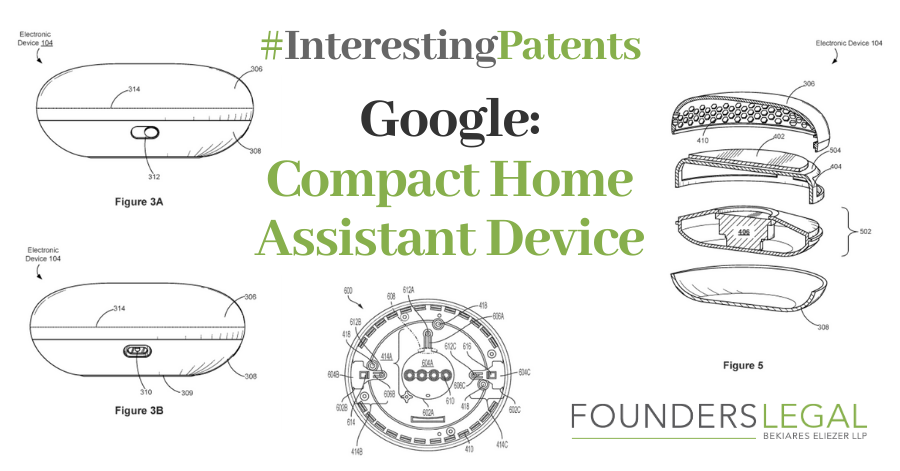
Interesting Patents | Google | Thursday, April 12, 2023
The United States Patent and Trademark Office (USPTO) grants hundreds of new patents every week, showcasing developments in technology and innovation. In our Interesting Patents series, we highlight exciting US patent applications and patents recently issued by the USPTO. The patent system enables the protection of innovative ideas, and newly published patent applications provide a glimpse into the future of technology and innovation.
In this edition of #InterestingPatents, we look at Google’s recently published patent application for next-generation compact voice-assistant devices with enhanced user interfaces and affordable design.
As voice-assistant devices become increasingly prevalent in modern life, Google has recently published a patent application outlining a versatile and cost-effective design for the next generation of these devices. The proposed design offers enhanced user interfaces, customization, and improved audio performance, while maintaining affordability and a compact form factor. This development represents a notable advancement in voice-assistant technology, potentially increasing accessibility for a wider range of users.
Looking for more information on patents? Want to run a free AI-Powered Prior Art Patent Search? We also offer useful Intellectual Property News & Resources with guides, videos, and insight on patents and inventorship. Think you might need a legal professional? Check out our Tips on Choosing a Patent Lawyer and contact us if you’d like a free consultation.
Next-Generation Compact Voice-Assistant Devices: Google’s Published Patent Application for Enhanced User Interfaces and Affordable Design
ASSIGNEE: GOOGLE, LLC
US PAT. APPL, NO. 17/964,319
INVENTION OVERVIEW:
In today’s fast-paced world, voice-activated electronic devices have become an essential part of our daily lives, helping us to streamline tasks, access information, and interact with technology in a more natural and intuitive manner. Voice-assistant devices have found their way into a wide range of environments, from homes and offices to public spaces and even vehicles. These devices often rely on microphones to collect voice inputs and provide audible responses through integrated speaker systems. However, creating compact and affordable voice-assistant devices that offer a high degree of user customization can be challenging. In an attempt to address this, a recently published patent application, Google describes a versatile and cost-effective design for a voice-assistant device.
Some of these devices may lack a display screen and rely solely on voice interaction, necessitating clear and audible responses from the device for seamless communication. Often it is the device’s speaker system that plays a crucial role in generating adequate sound of sufficient clarity and volume to provide effective audible responses to user requests. Catering to the varying needs and preferences of users, voice-assistant devices can be designed with different appearances, form factors, and functionalities.
One of the key challenges in developing compact voice-assistant devices is integrating multiple user interface options without compromising on cost-effectiveness and simplicity. In this published patent application, Google focuses on calibrating available user interfaces to ensure reliable performance, while also providing supplemental functions that go beyond the conventional microphones, speaker systems, or simple LED indicators. By integrating additional user interface options, the device can cater to a broader range of user requirements and preferences, ultimately offering an overall improved user experience. The published patent application showcases a compact design that can be manufactured at a lower cost, making it an attractive option for consumers seeking affordable voice-assistant devices. The design of the device in the patent application emphasizes a simple and compact form factor that does not compromise on performance, delivering reliable and accurate voice-assistant functions even in challenging operating environments.
The design of the device takes into account the need for supplemental user interface functions that can provide added value to users. For instance, the device could include touch-sensitive surfaces, gesture recognition, or even biometric authentication to enhance security and user personalization. These additional features not only provide a more comprehensive user experience but also make the device more adaptable to different scenarios, such as when a user is unable to interact with a display screen or when a voice-assistant device is not within close proximity. As voice-assistant devices are primarily designed for audible interaction, optimizing the acoustic performance of the integrated speaker system is essential. The published patent application addresses this by incorporating advanced audio processing techniques and algorithms that enable the device to generate sound with enhanced clarity, depth, and volume. This ensures that users can effortlessly communicate with the device and receive easily intelligible responses, even in noisy or crowded environments.
One interesting aspect of the Google’s published patent application is the ability to personalize the user experience by adapting to individual preferences and usage patterns. The device can learn from user interactions, recognize frequent commands, and tailor its responses accordingly. This personalization can extend to the device’s physical appearance and form factor, enabling users to choose from various designs, colors, and materials that best suit their preferences and home environment. The published patent application represents a significant advancement in the field of voice-assistant devices and may lead to increases accessibility.
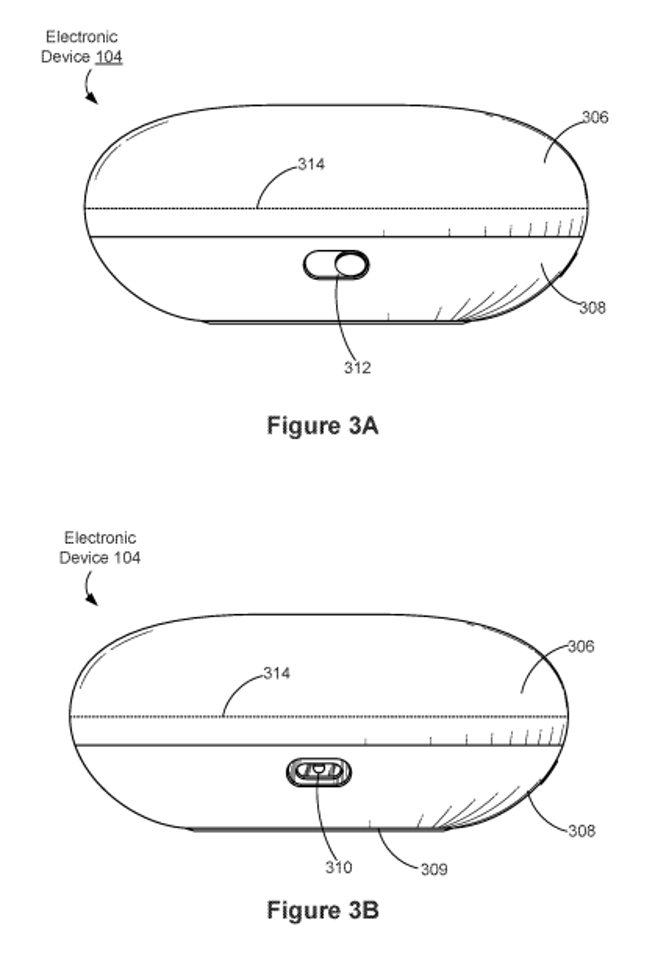
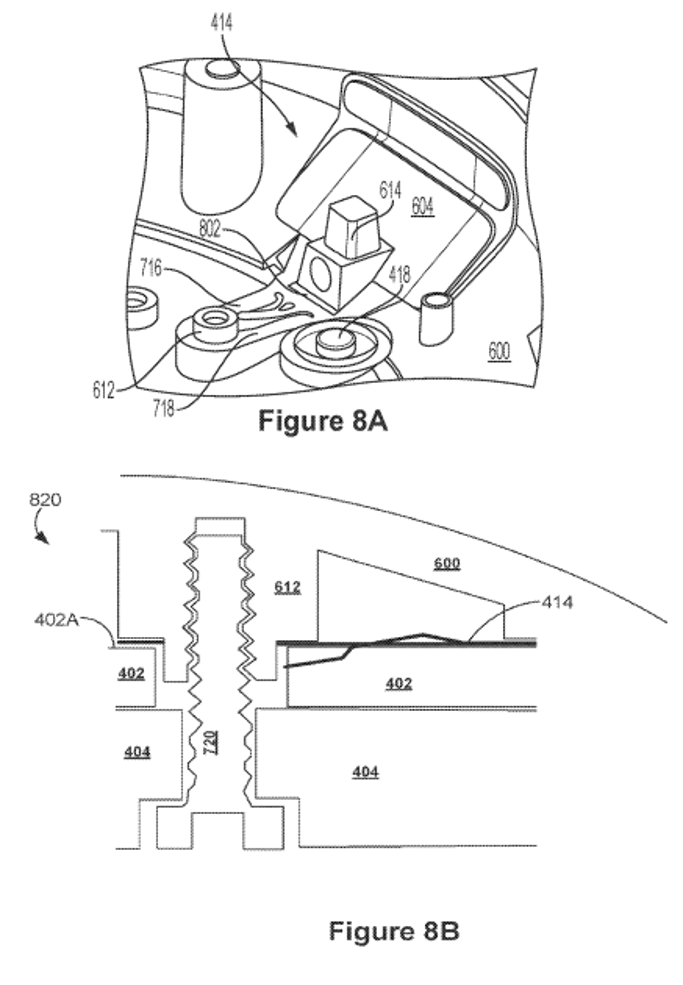


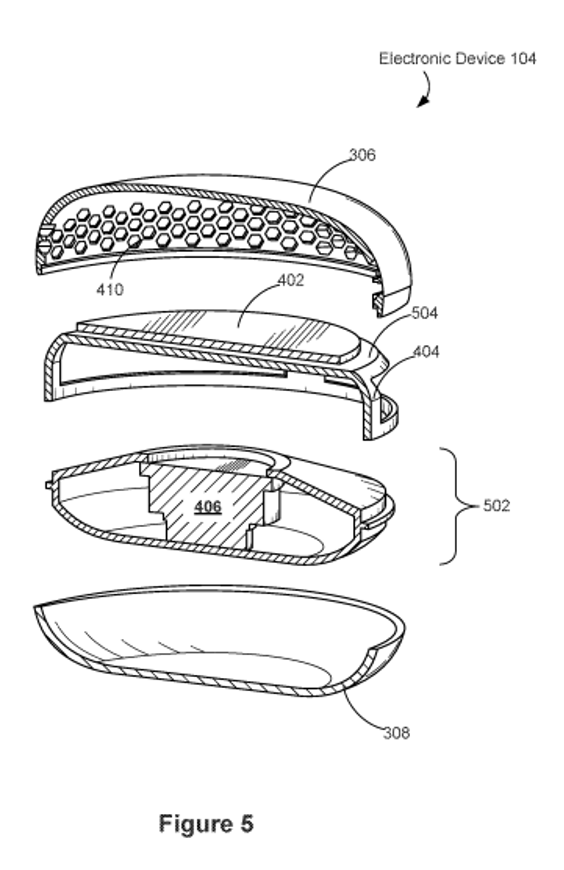
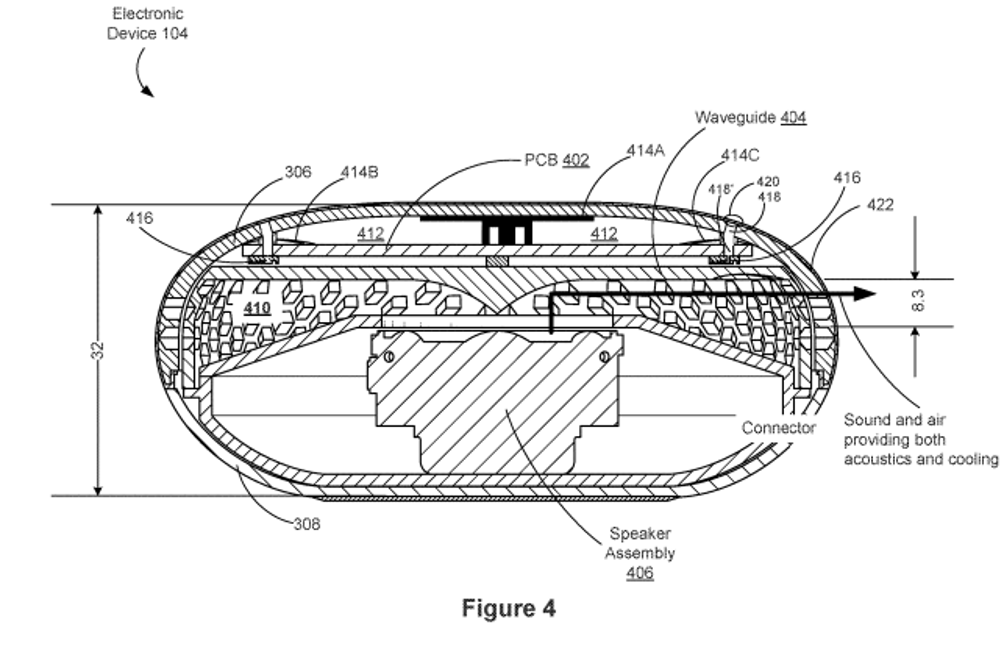
Patent Abstract:
Various arrangements of electronic devices, such as assistant devices, are detailed herein. Such a device can include a housing and a microphone. A microphone aperture can be defined by the housing that directs sound from outside the housing to the microphone. A cover, which can be fabric, can be attached with the outside of the housing. An adhesive ring on the housing around the microphone aperture can be used to attach the cover to the housing.
INTERESTING PATENTS BY FOUNDERS LEGAL
Founders Legal® (Bekiares Eliezer LLP) is a boutique law firm headquartered in Atlanta, GA, USA, that focuses exclusively on complex matters in the areas of Patents and Intellectual Property, Corporate, Transactional, Securities and Data Privacy Law. Founders Legal is composed of highly skilled and experienced attorneys who are diverse in disciplines and specialized in their unique areas of practice. Founders Legal is dedicated to creating, utilizing, and continually iterating upon the latest software, technology, and processes to maximize efficiency and provide uncompromising value to its clients.
For more information, please contact Founders Legal or schedule a free consultation with one of our attorneys.
